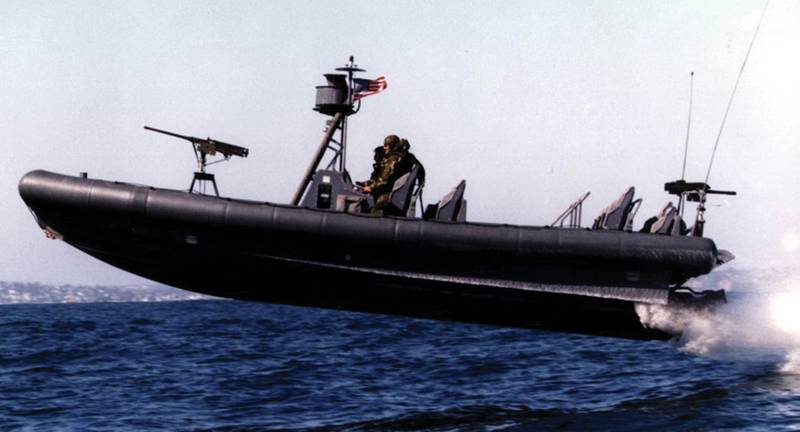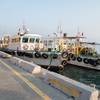Crew System Integration on RHIBs and High Speed Craft
Human Systems Integration (HSI) is a recognized requirement for many organizations. This is rapidly becoming more important as the professional RHIB and high speed craft sector are required to perform increasingly complex tasks. The objective is for marine units to deal with new scenarios, make fast decisions and implement them using high speed craft and specialist equipment to achieve successful outcomes.
Crew-Systems Integration (CSI) brings together all these elements for the fast boat sector. The challenge for all professional organizations is the integration aspect of the many disparate areas that are required to deliver enhanced performance and safety. To highlight how a number of CSI domains integrate for the marine sector, the graphical interpretation of Crew-Systems Integration is used (see diagram, next page). FRC International is an education, training and qualification developer for Fast Response Craft (FRC) personnel. The innovative approach includes understanding risk, duty-of-care, legislation, evolving technologies, new operational tasks and scenarios. FRC training recognizes the growing need for professional and commercial maritime operators to be interoperable with other agencies and assets. A set of competence-based international qualifications has been recognized by The Nautical Institute to support best practice for military, professional and commercial marine organizations worldwide.
FRC International is hosting the CSI 2013 conference, an event that will attract end-user organizations and industry from around the world. It will cover the full range of factors that deliver performance and safety for the crew and operating organization. The topics that will be covered include Crew, Craft & Equipment, Training and the interface between them. Human Factors Engineering which can be linked to defined Qualifications and Simulation. To complete the integration picture the conference will also focus on Repeated Shock & Whole Body Vibration, Unmanned Vehicles and Operations. These nine topics can be considered separately but ultimately the challenge is linking them up.
Craft & Equipment
The sub 80 ft. (24 m) sector is developing at a rapid pace. Not only has this resulted in increased boat speed and capability but new technologies and systems are available both for new craft and as retrofits. Boat builders now need to understand the level of test and evaluation that their craft will go through as part of a tender process. Equipment manufacturers need to develop electronics and equipment to international standards and where appropriate military specifications. Seat manufacturers will now have the opportunity to integrate new international testing standards into their development process. The conference will highlight the latest innovations and how operators can incorporate these developments into their requirements.
Crew
This increasing operational capability facilitated by enhanced craft no longer means that the vessel is simple to operate within the full operational envelope. Slow speeds and benign environments are relatively simple to operate in, but as speed increases, the environment deteriorates. As systems become more complex the competencies demanded of the crew move to a higher level and are more like those required by a helicopter crew where effective situational awareness and Command & Control (C2) become crucial for performance and safety. The needs of regular passengers increasingly need to be considered by the crew as they are often being transported at speed to perform tasks on a fixed or moving platform. This includes ships pilots, boarding teams and wind farm engineers. The conference will examine demands on crew and passengers and how the crew may be supported to overcome these.
Training
As the capability of the craft and its systems have advanced the crew, in evolutionary terms, remains unchanged and can be outperformed by the craft. To counter this a part of the integrated solution is enhanced training. Boats very rarely operate alone and so standardization is required to ensure effective interoperability. This ranges from teamwork between two boats to multiple craft operating together in coalition operations. The conference will examine current developments in training programs and Standard Operating Procedures (SOPs) and how they are being developed and disseminated to the global community.
Human Factors Engineering (HFE)
With new and retrofitted craft being capable of out-performing the crew it is essential that the designers focus on designing for the human crew to ensure that they can operate the craft at the edge of its operating envelope to ensure operational success and safety for the crew and their passengers. The conference will highlight developments in HFE, often called ergonomics, specific to fast craft design and operations.
Qualifications
Qualifications help to differentiate between individuals. They also allow marine employers to recruit good crew members and provide them with a developmental career structure. Qualifications are the foundation of Standardization-for-Interoperability. It is essential that the international marine community have a qualification system that provides minimum standards of competence. The system also needs to demonstrate the advanced competencies required to operate the advanced systems and procedures now being deployed on RHIBs and high speed craft.
The conference will highlight the work being undertaken to develop qualifications appropriate to the professional sub 80 ft. (24 m) sector and how these can be utilized by the international community.
Simulation
For ship maritime operations, including bridge and control room, simulation is recognized as an effective training tool. In other sectors, including aviation, it is an essential training tool.
The sub 24m sector has not yet effectively embraced simulation but this is about to change.
There are many reasons for this but a fundamental requirement is the increasing deployment of sophisticated electronic systems for those operating at high speed in demanding environments. Relevant simulation can be used to effectively support training and qualification programs.
It can provide a controlled environment that does not require use of a boat or fuel. The conference will highlight the different types of simulation and how operators can effectively use simulation to enhance operational effectiveness and safety.
Whole Body Vibration & Repeated Shock (WBV & RS)
The risks of exposing fast craft crews and passengers to WBV & RS have now been recognized. Systems have been developed to reduce or manage the exposure. Besides the obvious risk of acute and chronic injury RS & WBV can induce fatigue and degrade the interaction between the crew and the craft. The drive for legal compliance within the EU and employers needing to demonstrate duty-of-care in the rest of the world has driven the pace of development. Although reducing the risk to zero is virtually impossible for planing craft at sea, operators are now engaging with the concept of ALARP (As Low As Reasonably Practicable). The conference will highlight developments related to the management and control of exposure to WBV & RS.
Unmanned Surface Vehicles (USV)
The rapid development of unmanned vessels and systems is due to a number of factors. The drive for reduced manning can be due to cost and recruitment issues. The manning of craft can constrain the operational envelope and in certain applications ‘unmanned’ can simply remove the human from harms way. Although remote control systems are not new, the technical developments that are leading to more autonomous systems are changing the face of fast craft operations. The conference will highlight the developments in unmanned systems and the opportunities for the marine sector that these developments bring.
Operations
For the modern RHIB and high speed craft organization all of the topics described above then need to be integrated to deliver operational capability.
The technical developments and systems to support human effectiveness provide the ability to either enhance the operational envelope or provide more resilience within the system for current operations. The conference will examine how fast craft operations are changing and what the future may hold for the crews and their organisations.
Emerging maritime nations have the opportunity to use the integration template to develop fast craft capabilities based on international best practice. For established maritime organizations the challenge in these times of austerity is having clear reasons for where to apply their efforts and budgets when replacing or upgrading craft. This approach can benefit all sectors from ships being replaced with multiple small craft fleets to the challenges of renewable energy support craft.
FRC International are hosting the CSI 2013 conference at the RNLI College in Poole UK from July 2-4, 2013. Dr Trevor Dobbins, Technical Director of FRC International, said, “the 2013 event has a focused program that includes more than 20 presentations by international experts. The objective is to bring together all the topics of Crew Systems Integration to show how marine operations in all sectors can benefit from a joined up approach.” The conference also gives industry the opportunity to participate with an exhibition area designed to highlight the latest developments in technology for RHIBs and high speed craft.
CSI 2013 is an independent event that is relevant to all professional operators, boat builders, equipment manufacturers and designers. To highlight the importance of CSI for the international community keynote presentations are by leading experts including, former Royal Navy Rear Admiral Chris Parry, who was Director of Concept and Doctrine Development for the UK Ministry of Defence, and is now a noted strategic consultant and geopolitical forecaster.
For further information see CSI 2013 Conference www.frc-int.com
John Haynes, AFNI, is Operations Director of FRC International and a presenter of WBV courses. He is a Yachtmaster Ocean and Advanced Powerboat Instructor. Subject matter expertise includes high speed craft consultancy, product development and specialist training. [email protected]
(As published in the May 2013 edition of Maritime Reporter & Engineering News - www.marinelink.com)


















